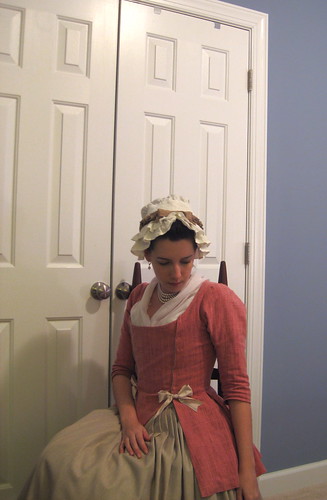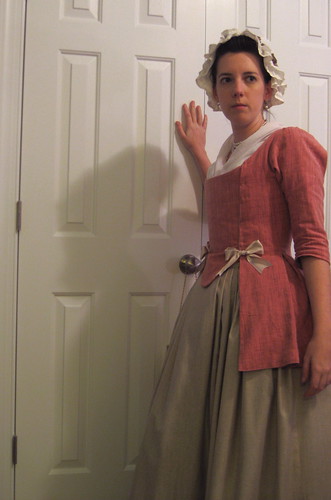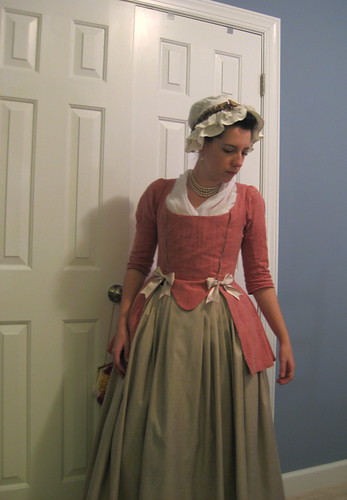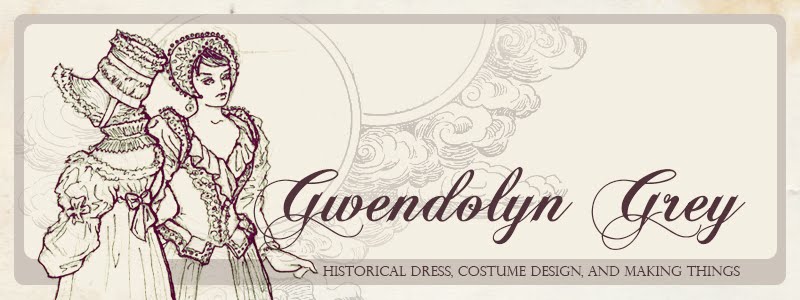I've been quite busy recently, and have spent the last week or two since my last post up to my ears in painting/researching/planning my future.
First miniature is underway, and I promise I'll post about that soon. I've discovered that, perhaps due to the small scale (to which I'm still adjusting), I can only work on it during daylight hours. If I want to work on it after dusk I'll need to finally buy a decent flexible lamp. Since the bulk of my days are taken up with my regular 8-5 job, I don't have a lot of daylight once I've gotten home and eaten dinner and regained a bit of energy. As this means I can't really work on the miniature during the week, I also started a new oil painting. It's kind of steampunkish, and I'm really hoping it turns out half as good as it looks in my imagination.
Getting back into "serious" painting fits into the whole "planning my future" bit I mentioned in my first sentence. I have lots of ideas for new pieces, and lots of ambitions regarding heading towards an eventual art career. However, nothing will ever happen until I put together decent, and coherent, body of work. That is my goal for the summer. Also been reading lots about art fairs and visiting local galleries etc. It's all rather frightening, but not, I think, unachievable.
And totally unrelated to anything else, just check out John Singer Sargent's studio!
I can only imagine working in a space like that... but I suppose sheer genius deserves the best.
Tuesday, April 19, 2011
Friday, April 8, 2011
Tackling the portrait miniature
Queen Charlotte by Jeremiah Meyer- 1772
Painting miniatures was one of those few occupations considered genteel enough for a lady, and while a large number of professionals had a thriving business painting miniatures it was also a hobby often picked up by amateurs. In 1712, a writer for The Spectator noted, "limning, one would think is no expensive Diversion, but... she paints fans for all her female acquaintance and draws all her relations pictures in miniature". While Europe seems to have been more accepting of female artists in a professional capacity than America was during the 18th century, there are certainly references to ladies learning painting and drawing here during that time. By the early 19th century a few women were working as miniature painters, and the number of female artists rapidly increased as time went on.
All of this fits perfectly with my long-standing desire to combine fine art and reenacting in an appropriate and enjoyable manner.
-First step: Look at LOOOOTTTSSSSS of miniatures
-Second step: Read primary documents concerning The Art of Drawing and Painting in Water-Colours, and Miniatura or the Art of Limning, etc.
-Third step: Research tools and materials. Try not to get too bogged down in the thrill of Artists Pigments c. 1660-1835. (No, seriously... this book is epicly awesome. I could, and may yet, write a very long blog post on just a few snippets of info found within its pages.)
-Fourth step: Read more about the history of portrait miniatures, or, as they were more commonly known before the mid to late 18th cen, 'limnings'.
-Last step: Hold my breath, cross my fingers, and just paint.
(will post more later about materials, techniques, and my progress)
Sunday, April 3, 2011
New clothes! 18th Cen. Jacket in Pink
I shall preface this post with the disclaimer that the jacket is Not-Done-Yet and is still in want of trim. That said, I've worn it twice now to two different gatherings, and wanted to document its existence.

The jacket is made of a pink cotton homespun, lined with a natural medium-weight linen. This was one of those situations where I had both fabrics in my stash and really didn't want to spend extra money... Also, I'm trying very hard to move away from blue in my costuming, as about 2/3's of my historical wardrobe is in the blue family. Not sure how successful I'll be in the long run, as I still adore blue (and it never fails to look good on me).
Like the majority of my historical clothes, the interior seams are all done by machine, but everything visible is hand-work.


The fullness of the skirts is achieved with five inverted box pleats, one at each seam, which are whipped to the lining for stability.
The pattern is very loosely based off the robe à l'anglaise in Jean Hunnisett's book. I say "very loosely" as I looked at it for general sizing, and drew what I thought would work. Fortunately, it did. I didn't bother drafting a sleeve pattern though, and just adapted one of Nicole's personal sleeve bases.
I'll probably write more about research and general info once I really truly finish it, and can post pictures of it in all its trimmed glory.


The jacket is made of a pink cotton homespun, lined with a natural medium-weight linen. This was one of those situations where I had both fabrics in my stash and really didn't want to spend extra money... Also, I'm trying very hard to move away from blue in my costuming, as about 2/3's of my historical wardrobe is in the blue family. Not sure how successful I'll be in the long run, as I still adore blue (and it never fails to look good on me).
Like the majority of my historical clothes, the interior seams are all done by machine, but everything visible is hand-work.


The fullness of the skirts is achieved with five inverted box pleats, one at each seam, which are whipped to the lining for stability.
The pattern is very loosely based off the robe à l'anglaise in Jean Hunnisett's book. I say "very loosely" as I looked at it for general sizing, and drew what I thought would work. Fortunately, it did. I didn't bother drafting a sleeve pattern though, and just adapted one of Nicole's personal sleeve bases.
I'll probably write more about research and general info once I really truly finish it, and can post pictures of it in all its trimmed glory.

Subscribe to:
Posts (Atom)


